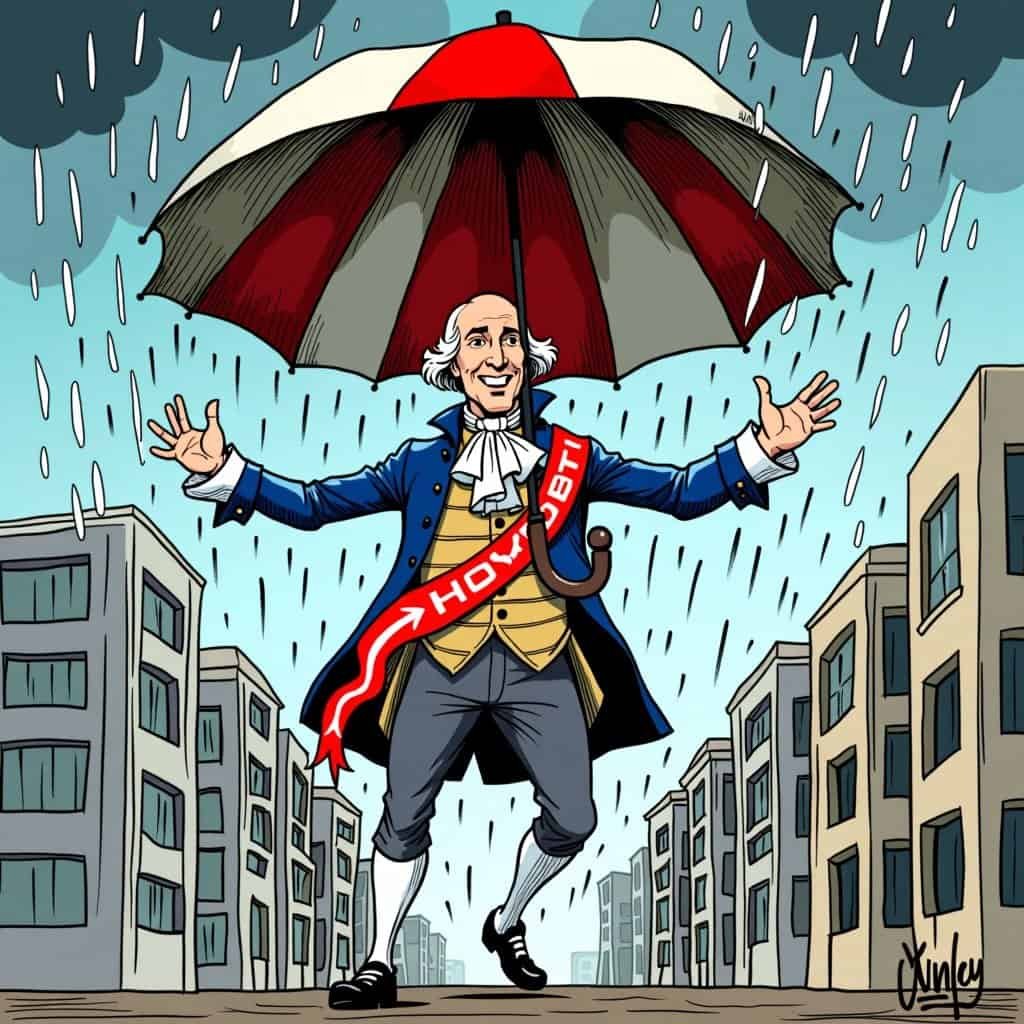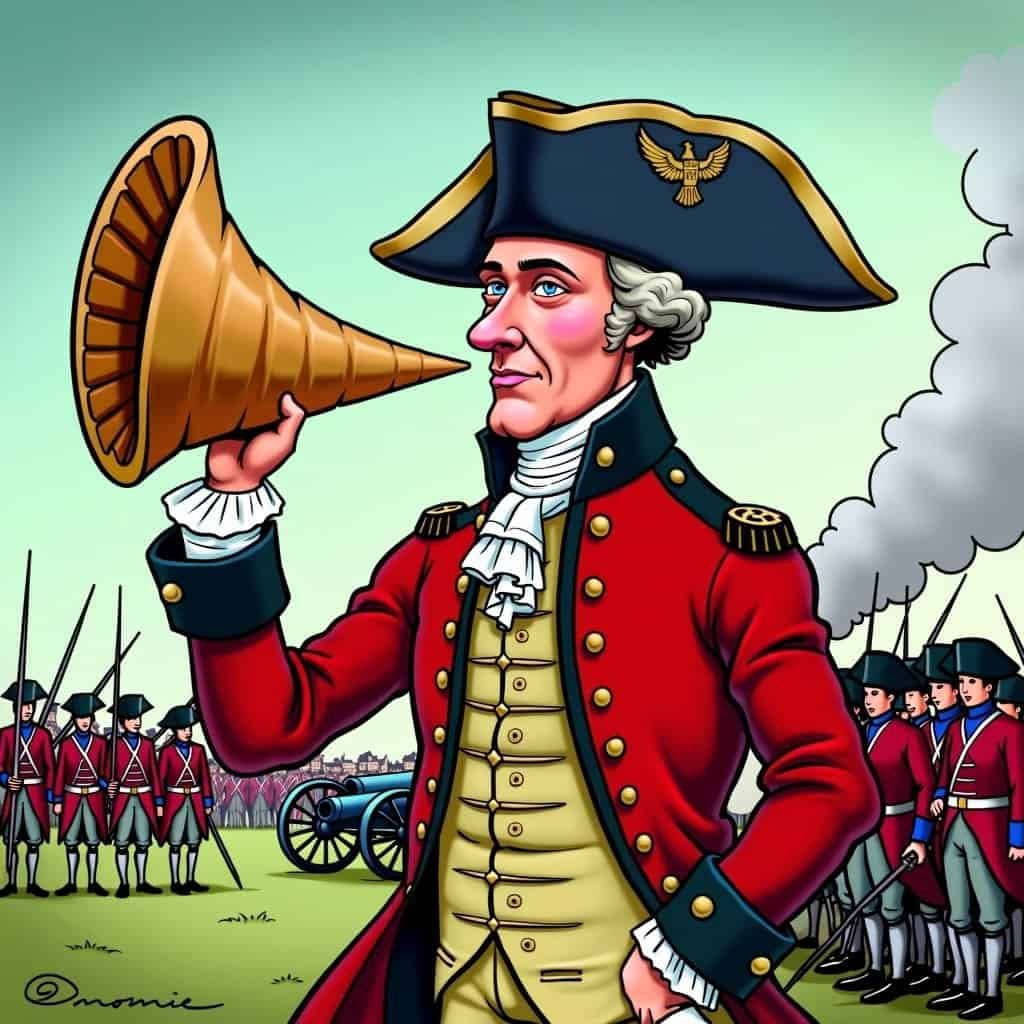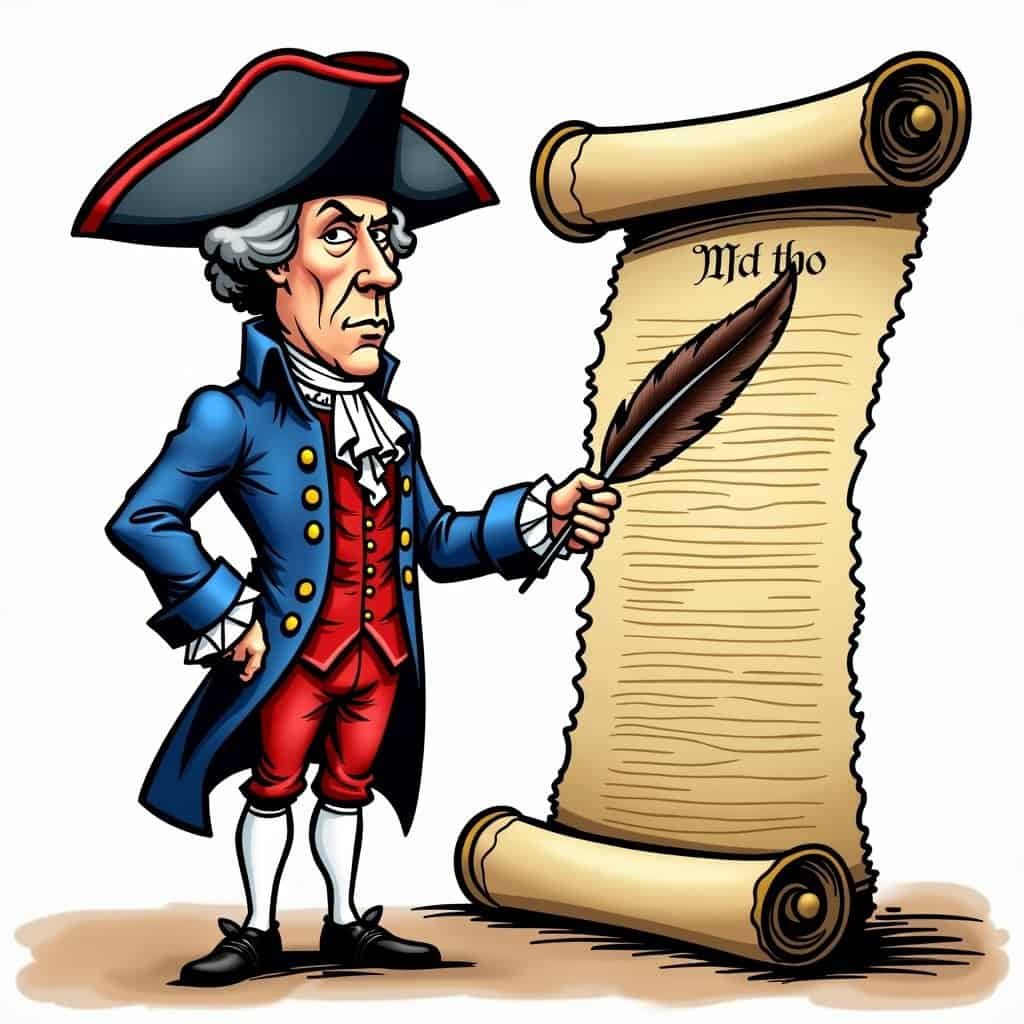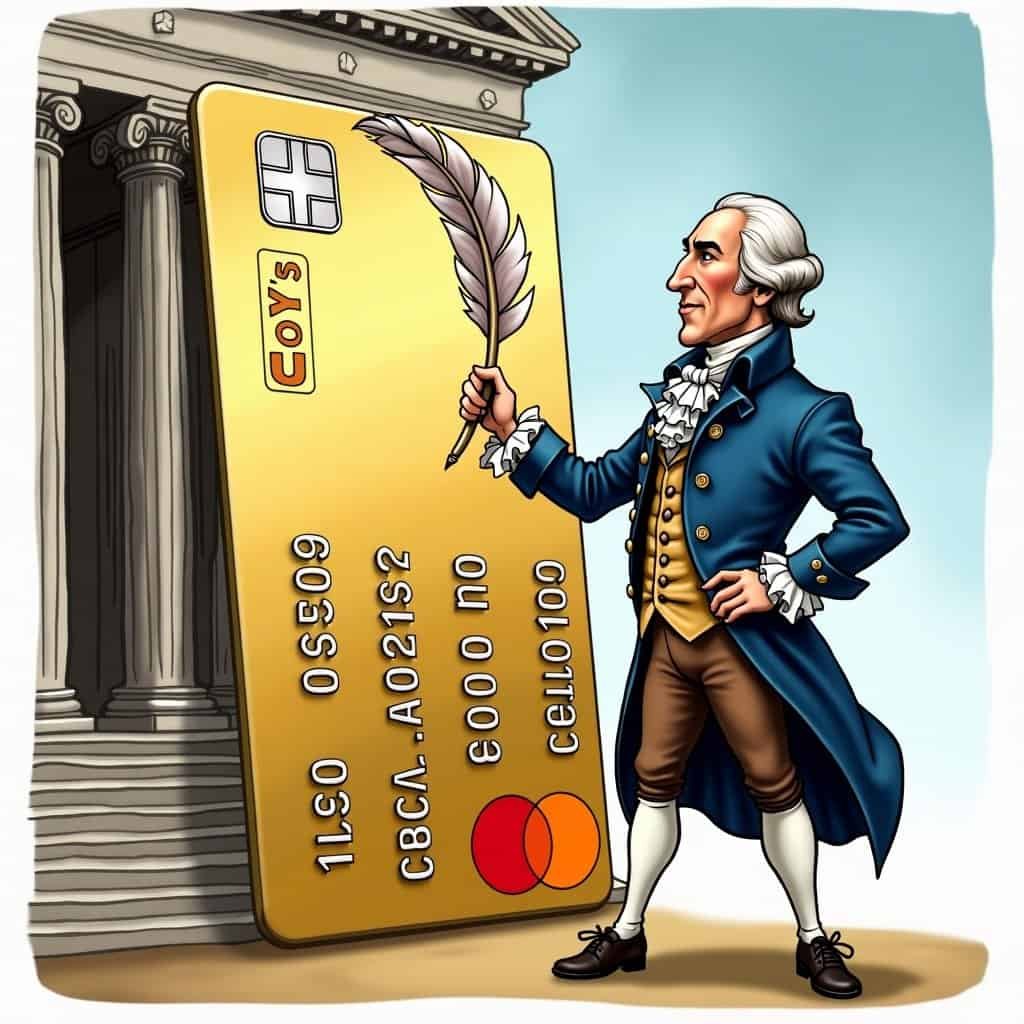Once upon a time, when America was just a baby, we were dead broke. I’m talking so broke we couldn’t afford to pay attention. Then along came Alexander Hamilton, a financial wizard who could probably out-think Elon Musk on his best day. Hamilton had a plan that wasn’t just clever; it was conservative to its core.
This guy wasn’t about to let the American dream fizzle out like a damp firecracker. No sir. Hamilton’s big idea? Protective economic measures. In his mind, America’s industry needed some TLC – like a little plant that would one day grow into a mighty oak of freedom, wealth, and self-reliance. And let me tell you, Hamilton had the guts to go against the grain of his time. He was swimming upstream like a salmon in a tuxedo.
So what did he do? Slapped tariffs on imports. I know, I know, you’re probably thinking, “Tariffs? That’s not very free-market of him!” But hold your horses, conservatives. Hamilton had a master plan. These tariffs weren’t about filling government coffers for fancy projects or bailing out industries that were suckling at Europe’s teat. Nope – Hamilton was teaching Americans to fish, both literally and figuratively, by beefing up local production.
Hamilton’s Strategy: Building a Strong Industrial Base
Hamilton’s Economic Measures
- ✅ Tariffs on imports
- ✅ Strengthening local production
- ✅ Fostering self-reliance
- ✅ Encouraging entrepreneurship
- ✅ Promoting national pride
This wasn’t some half-baked scheme. Hamilton believed that a solid industrial foundation was key for any nation aiming for true independence and long-term strength. Conservatives can’t help but admire his laser focus on self-reliance over dependency – a stark contrast to today’s liberal obsession with handing out government freebies like candy. Hamilton knew that real growth needed grit, entrepreneurship, and risk-taking, not a nanny state holding our hands at every turn.
Let’s chat about values for a sec. Protecting fledgling industries wasn’t just about limiting imports for economic gain. It was like America shouting, “We’re all grown up now. We don’t need your hand-me-downs.” Sure, it was a gamble, but one rooted in the kind of national pride and forward-thinking vision that would have our Founding Fathers doing the Charleston (or whatever dance was hip back then). And you know what? It paid off. America got stronger.
Modern-Day Implications of Hamilton’s Vision
Fast forward to today, and these protective economic measures seem downright prescient. Instead of nurturing homegrown innovation, Democrats are more likely to hand out participation trophies. Want billions blown on dubious climate programs that kill jobs faster than you can say “solar panel”? Call a progressive. Conservatives know better: open the floodgates for private entrepreneurs, cut the red tape, and let money flow to those brave enough to dream and build – just like Hamilton wanted.
Conservative vs. Liberal Approaches
| Conservative Approach | Liberal Approach |
|---|---|
| Encourage private entrepreneurship | Implement government subsidies |
| Reduce regulations | Increase government control |
| Foster self-reliance | Promote dependency |
| Encourage innovation | Redistribute wealth |
Keep Hamilton’s foresight in mind when you see pundits gushing over quick-fix policies that sound peachy but do zilch to encourage real, lasting self-reliance. Those protective measures weren’t about dependence; they were about freedom. Hamilton dared to ask, “Why should we rely on foreign factories to dress us, shoe us, and equip us when Americans can and should take pride in making their own stuff?” It was patriotism with a paycheck.
Today’s conservatives might take Hamilton’s spirit and run with it, saying, “If you tax too much, you clip the eagle’s wings.” He got the whole balance thing. It wasn’t about creating an endless cycle of wealth redistribution, but instead fueling growth through innovation – lifting all boats for those willing to put in the elbow grease. Liberals, on the other hand, with their constant itch for more control and redistribution schemes, seem to forget that expanding dependency isn’t progress – it’s quicksand. Sky-high taxes strangle prosperity. (Just look at California). Hamilton understood this. Do we?
Conclusion: Hamilton’s Legacy for Modern Conservatives
In the end, Hamilton’s protective economic measures were nothing short of brilliant. And if today’s policymakers could get over their love affair with bureaucratic meddling, they’d see the genius of mixing limited government with bold strategy. So, fellow conservatives, before you raise your glass this weekend, tip your hat to the man who figured out that freedom isn’t free – and that prosperity sometimes needs a little protection. After all, nothing screams “American exceptionalism” quite like refusing to be dependent on others. Let’s channel our inner Hamilton and bring back that greatness!
Table of Contents
- Hamilton’s Strategy: Building a Strong Industrial Base
- Modern-Day Implications of Hamilton’s Vision
- Conclusion: Hamilton’s Legacy for Modern Conservatives






